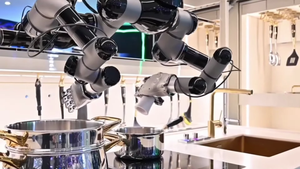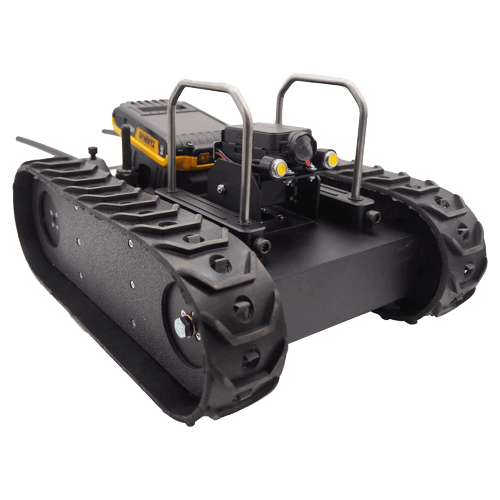The agricultural industry is on the brink of a major transformation. As the global population continues to grow, the demand for food is increasing at an unprecedented rate. To meet this demand, the agricultural sector is turning to technology, particularly robotics, to increase efficiency and productivity.
The world's population is projected to reach 9.7 billion by 2050, according to the United Nations. This growth will require a 70% increase in food production. Traditional farming methods will not be able to meet this demand. Labor shortages, climate change, and the need for sustainable farming practices are further exacerbating the problem.
The world population is currently estimated to be around 7.9 billion people as of 2023. This number is expected to reach 9.7 billion by 2050 according to the United Nations. This rapid growth in population presents significant challenges for the global agricultural sector.
The primary challenge is how to feed this growing population. The Food and Agriculture Organization (FAO) of the United Nations estimates that food production must increase by 70% by 2050 to feed the world's population. This is a significant challenge given the limited availability of arable land and the impacts of climate change on agricultural productivity.
World Agriculture Needs
- Increased Food Production: As mentioned above, there is a need to significantly increase food production. This will require improvements in crop yields, more efficient use of water, and better management of pests and diseases.
- Sustainable Farming Practices: With the increasing pressure on the environment and natural resources, there is a need for more sustainable farming practices. This includes practices that reduce the impact on the environment, such as organic farming, permaculture, and regenerative agriculture.
- Climate Change Adaptation: Climate change is expected to have significant impacts on agriculture, including changes in rainfall patterns, more frequent and severe droughts, and increased temperatures. Farmers will need to adapt to these changes, for example, by adopting drought-resistant crop varieties or changing their farming practices.
- Reducing Food Waste: A significant amount of food is wasted each year, from the farm to the table. Reducing this waste can help to meet the growing demand for food.
- Improved Distribution Systems: In many parts of the world, food is not getting to the people who need it most. Improving distribution systems and infrastructure can help to ensure that food is distributed more equitably.
- Dietary Changes: There is also a role for changes in diet. For example, a shift towards plant-based diets can help to reduce the pressure on agricultural systems, as these diets generally require less land and water than diets high in meat and dairy.
In conclusion, meeting the agricultural needs of a growing world population will require a multi-faceted approach involving improvements in food production, distribution, and consumption, as well as adaptations to climate change.

The Role of Robots in Agriculture
Robots are being used in various aspects of farming, from planting and harvesting to sorting and packaging. They can work around the clock, are not affected by harsh weather conditions, and can perform tasks with precision and consistency. Robots can also collect data, which can be used to make informed decisions about crop management. It is expected to have a significant impact on the industry. It can lead to increased productivity, reduced waste, and improved sustainability. It can also help address labor shortages and reduce the physical strain on farm workers. However, as discussed in this article, we still have much research to do to develop tactile abilities that remotely emulate human skills.

The Market for Agricultural Robots
The market for agricultural robots is growing rapidly. According to a report by Markets and Markets, the agricultural robots market is expected to reach $20.6 billion by 2025, up from $5.7 billion in 2020. This growth is driven by the increasing adoption of robots and automation technologies in the agricultural sector.
This level of innovation can also impact how much freshwater is used per crop type and distributed at the ideal time of the day to minimize the evaporation time.

The Future of Agricultural Robots
As technology continues to evolve, the role of robots in agriculture is expected to expand further. Here are some of the trends and developments that are shaping the future of agricultural robots.
Advanced Sensing and AI Capabilities
Advanced sensing technologies and artificial intelligence (AI) are enabling robots to perform more complex tasks. For example, robots can use machine vision to identify weeds and selectively apply herbicides, reducing the amount of chemicals used. AI can also enable robots to learn and adapt to different environments and conditions.
Autonomous Robots
Autonomous robots, which can operate without human intervention, are becoming more common in agriculture. These robots can perform tasks such as planting, watering, and harvesting crops. They can also navigate fields using GPS or computer vision.
Swarm Robotics
Swarm robotics, where a group of robots work together to perform tasks, is another emerging trend in agricultural robotics. This approach can increase efficiency and productivity. For example, a swarm of small robots could harvest a field faster than a single large machine.
The Role of Drones
Drones are also playing a significant role in agricultural robotics. They can be used for tasks such as crop monitoring, pest detection, and precision spraying. Drones can cover large areas quickly and provide real-time data to farmers.
Challenges and Opportunities
Despite the potential benefits, there are also challenges to the widespread adoption of robots in agriculture. These include high costs, technical complexities, and regulatory issues. However, as technology advances and costs decrease, the use of robots in agriculture is expected to become more common.

In conclusion, robots are set to play a crucial role in the future of agriculture. They can help address some of the major challenges facing the industry and contribute to a more sustainable and productive food system. As technology continues to evolve, the possibilities for agricultural robots are vast and exciting.
Remember, behind every great robot. There's an even greater human!






